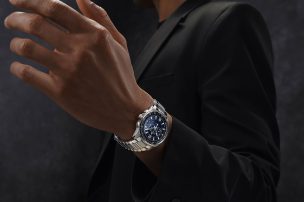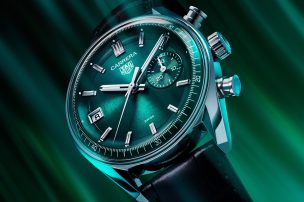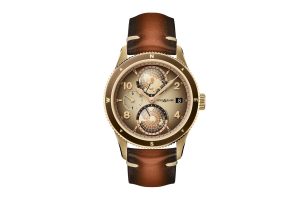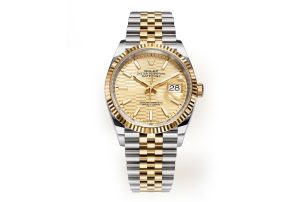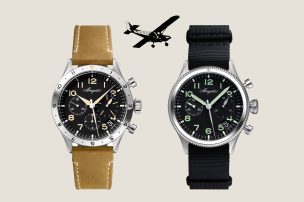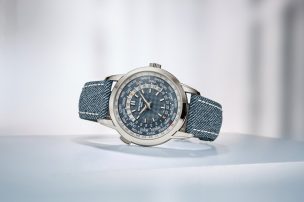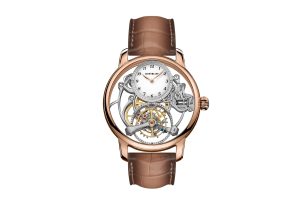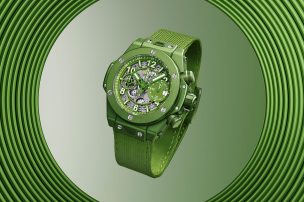
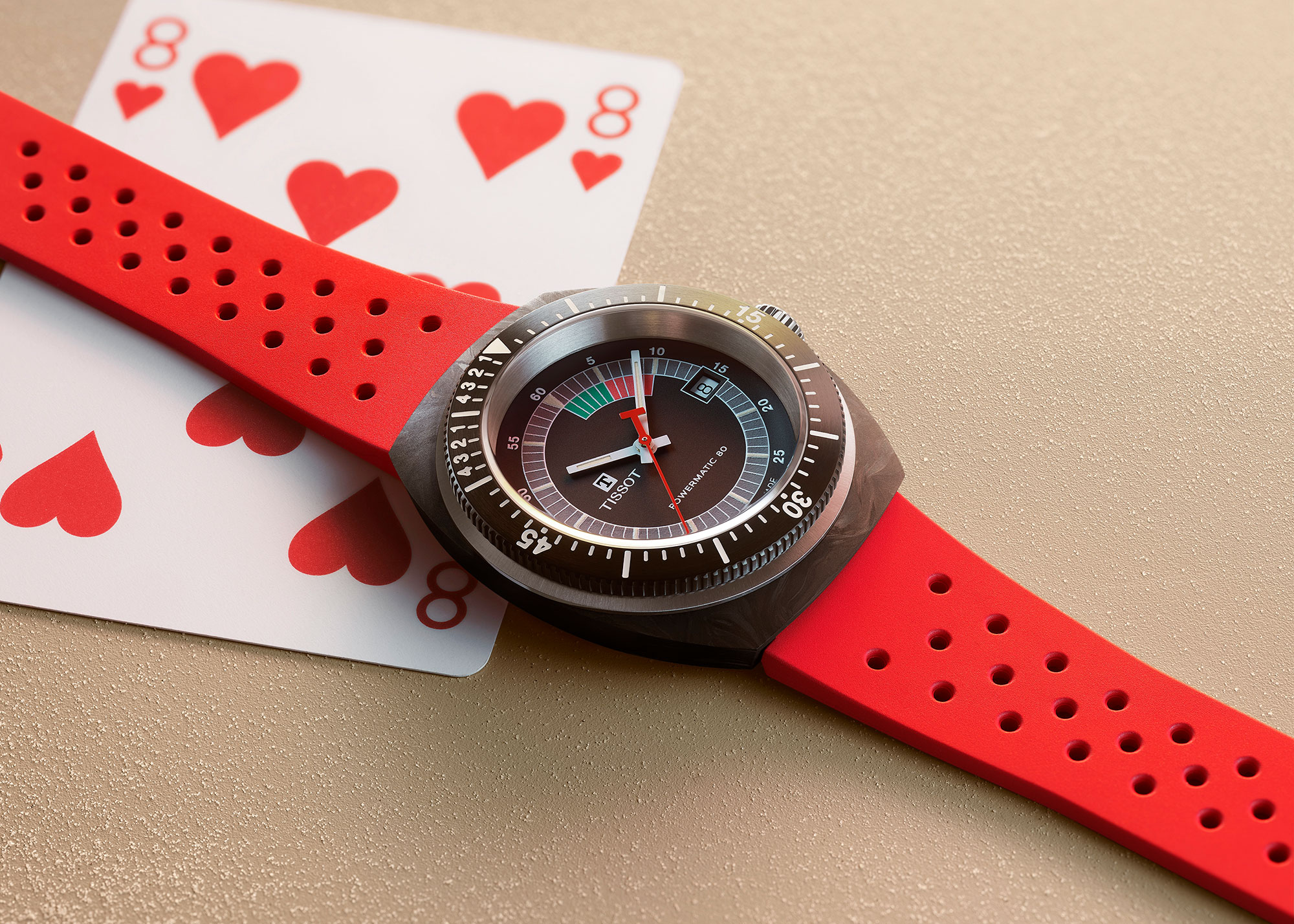
A Radiant Revival: the new Tissot Sideral
A touch of vintage and nostalgia: it’s no wonder that many popular watch models from the past are celebrating their comeback. Tissot, too, is reviving a model from the early 70s with the brightly coloured Sideral. Visually, the parallels to the original are unmistakable, but the Sideral also presents itself with some innovations – including three different colour versions. Let’s take a closer look.
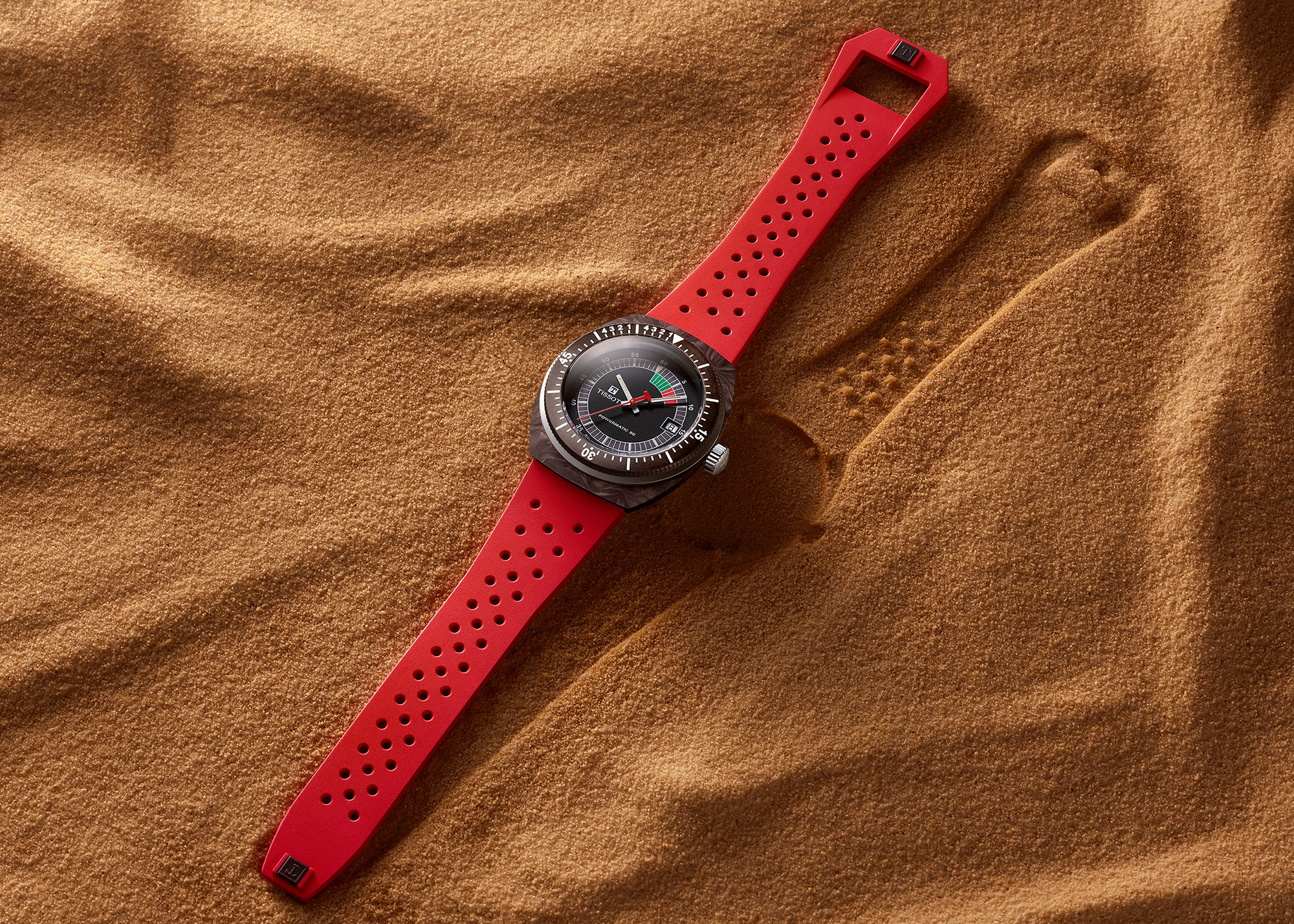
A look at history: Apollo 11, StarTrek, Sideral.
Whether on the television screen or on the wrist, the end of the 1960s was largely defined by aerospace. As early as 1968, Tissot was working on the first prototypes for the Sideral collection, which appeared in the following year. The special feature: a watch case made of fibreglass and steel, the first of its kind. Fibreglass, which is insensitive to temperature fluctuations, was mainly used for the construction of aeroplanes, spacecrafts, and boats. But because of its light weight and resistance, Tissot recognised the potential of the material for watchmaking. The Sideral was thus inspired by space travel. This is reflected not only in the use of fibreglass, but also in the model’s name. It derives from the astronomical term ‘sidereal’, which refers to fixed stars.
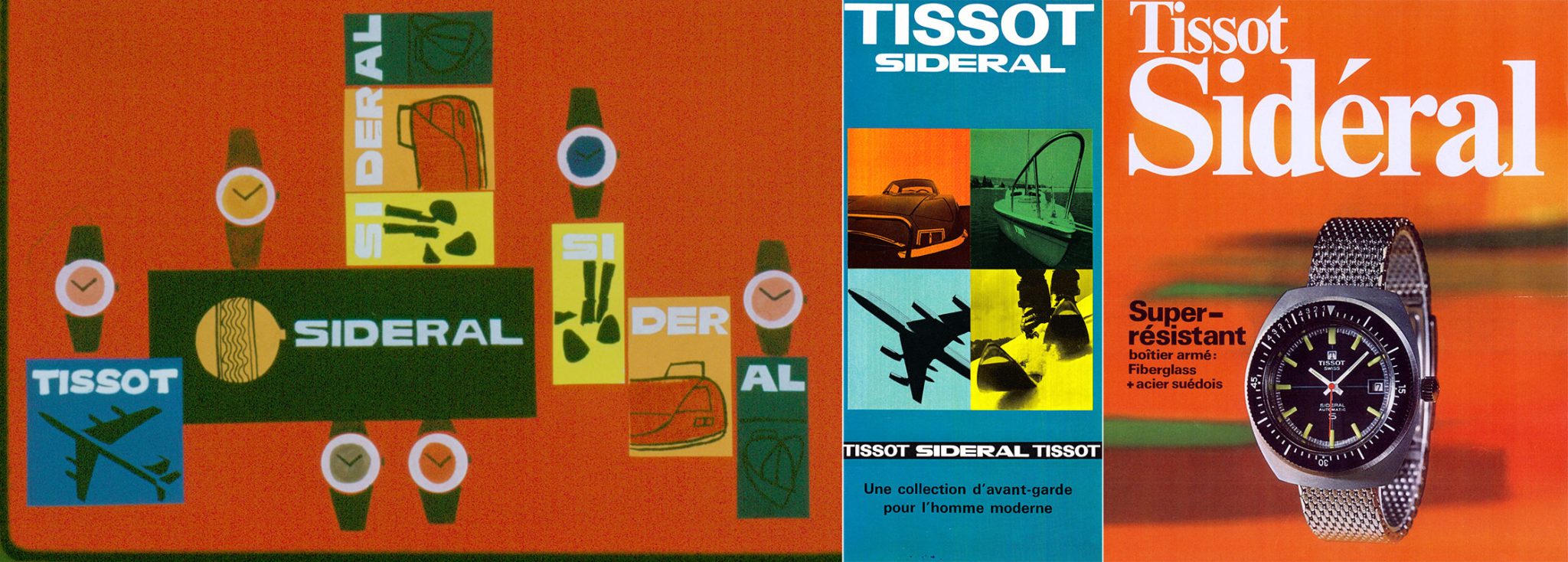
Sideral S: Bright yellow takes off
Advertising campaigns (1970-1971) made the watch renowned. Thus, the popularity of the collection contributed to the expansion of the brand in the early 1970s. In 1971, Tissot launched the Sideral S, on which the design of this year’s Sideral is based. With its case and through the integration of the perforated rubber strap in a bright yellow, which was already popular with the original Sideral, the watch stood out visually despite its simple design. Colours also play a leading role with this year’s Sideral. In addition to the characteristic bright yellow, the model is also available in a red and blue version.
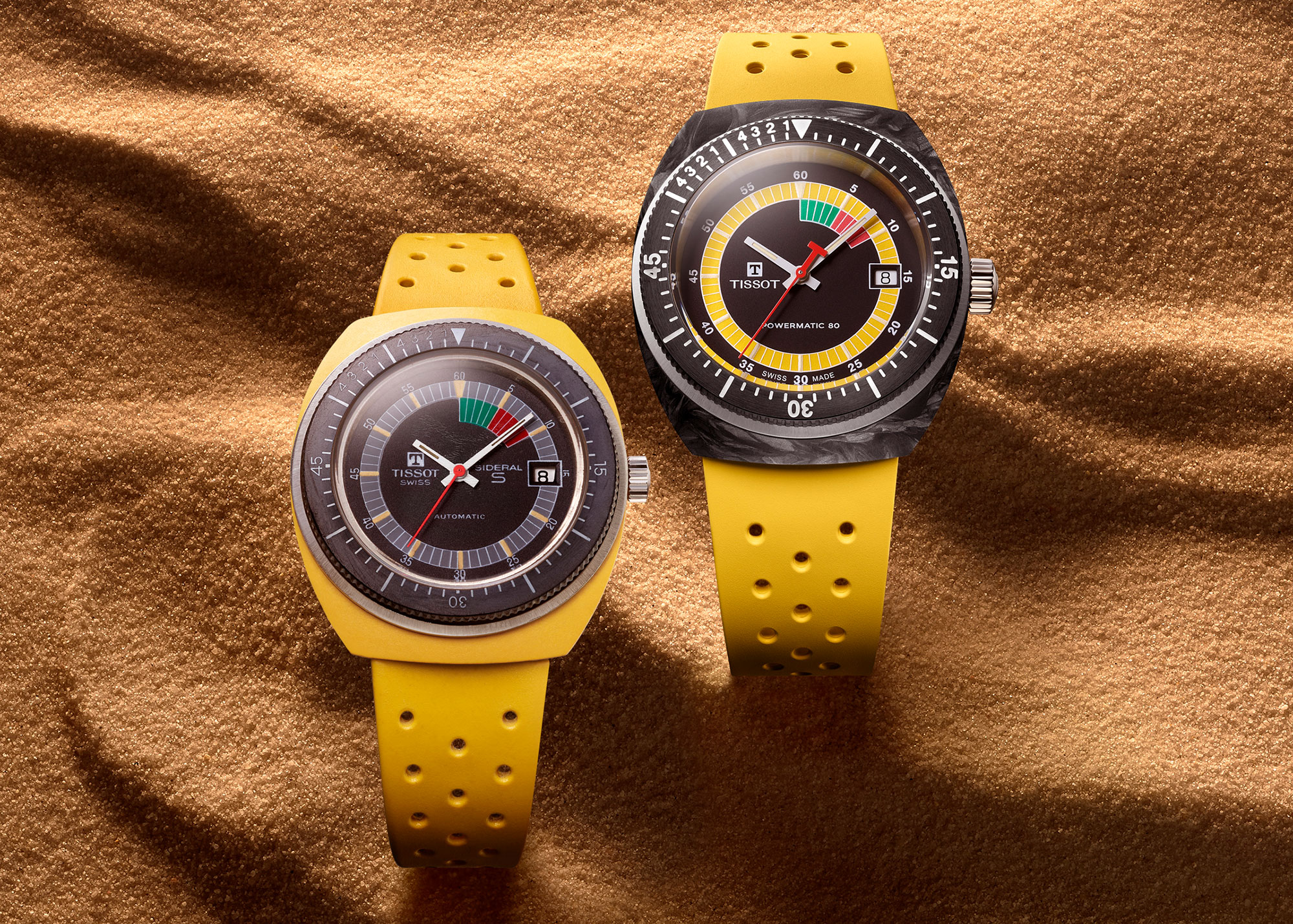
Carbon is the new fibreglass: The case of the Sideral
As mentioned, the first use of fibreglass for a watch case made the Sideral a novelty in the 1970s. Fast-forwarding to the here and now, Tissot has moved to a comparably innovative, but more contemporary, material for the Sideral’s case. Comparable to fibreglass in its light weight and durability, the Sideral is made of forged carbon and 316L stainless steel. Here, the carbon has a marbled look in black and grey for the yellow and red editions. The black carbon of the blue edition, however, is correspondingly infused with blue.
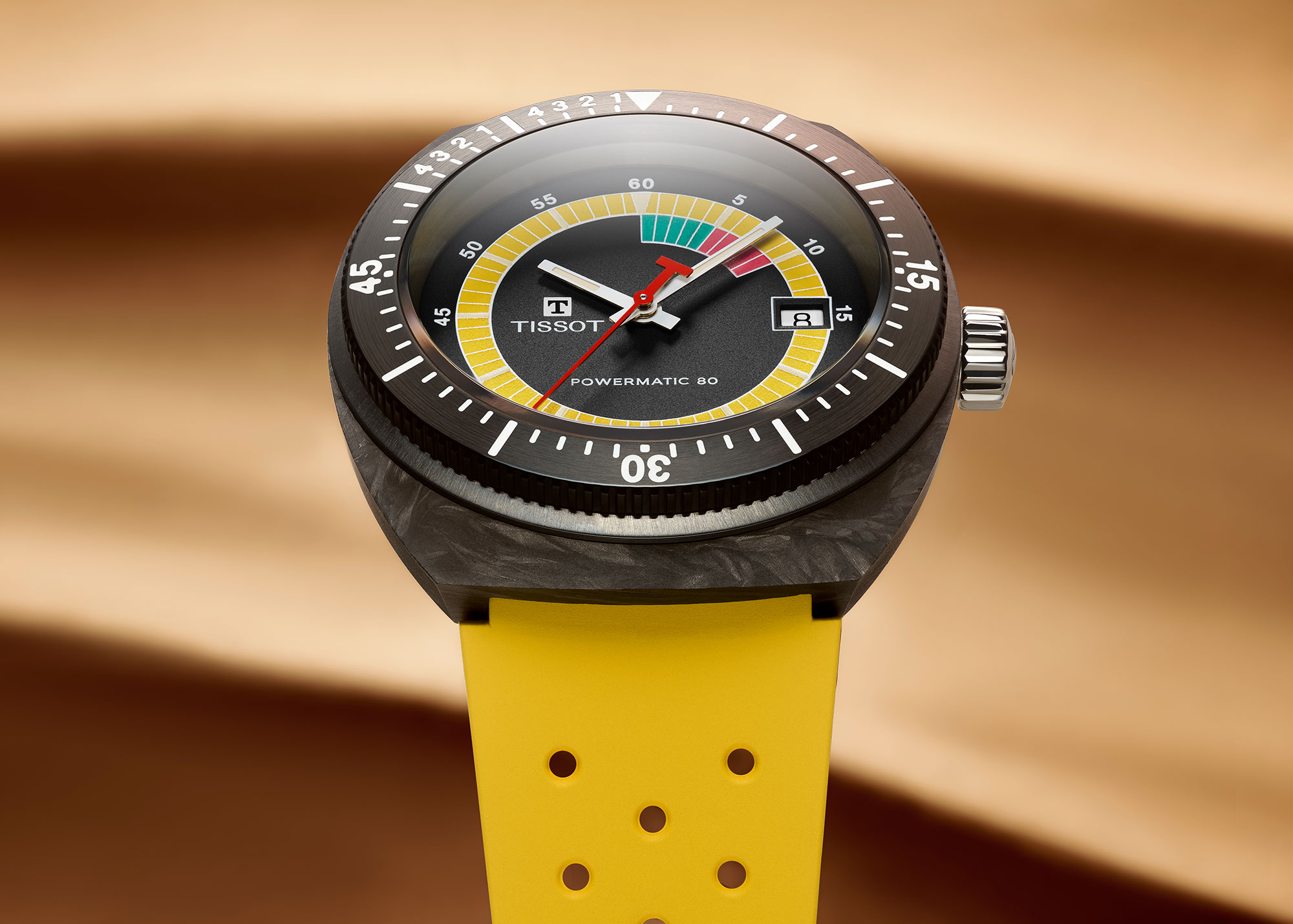
On the right side of the case is a fluted crown with an engraved T (for Tissot). For a clear view, the domed sapphire crystal on both sides of the case is scratch-resistant and non-reflective. Stainless steel, which bears circularly arranged engravings with the logo, model name, water resistance and material composition, frames the sapphire crystal on the caseback. In addition, the movement is visible through the caseback. The cushion-shaped case measures 41 x 46.5 mm and is water-resistant for up to 300 m.
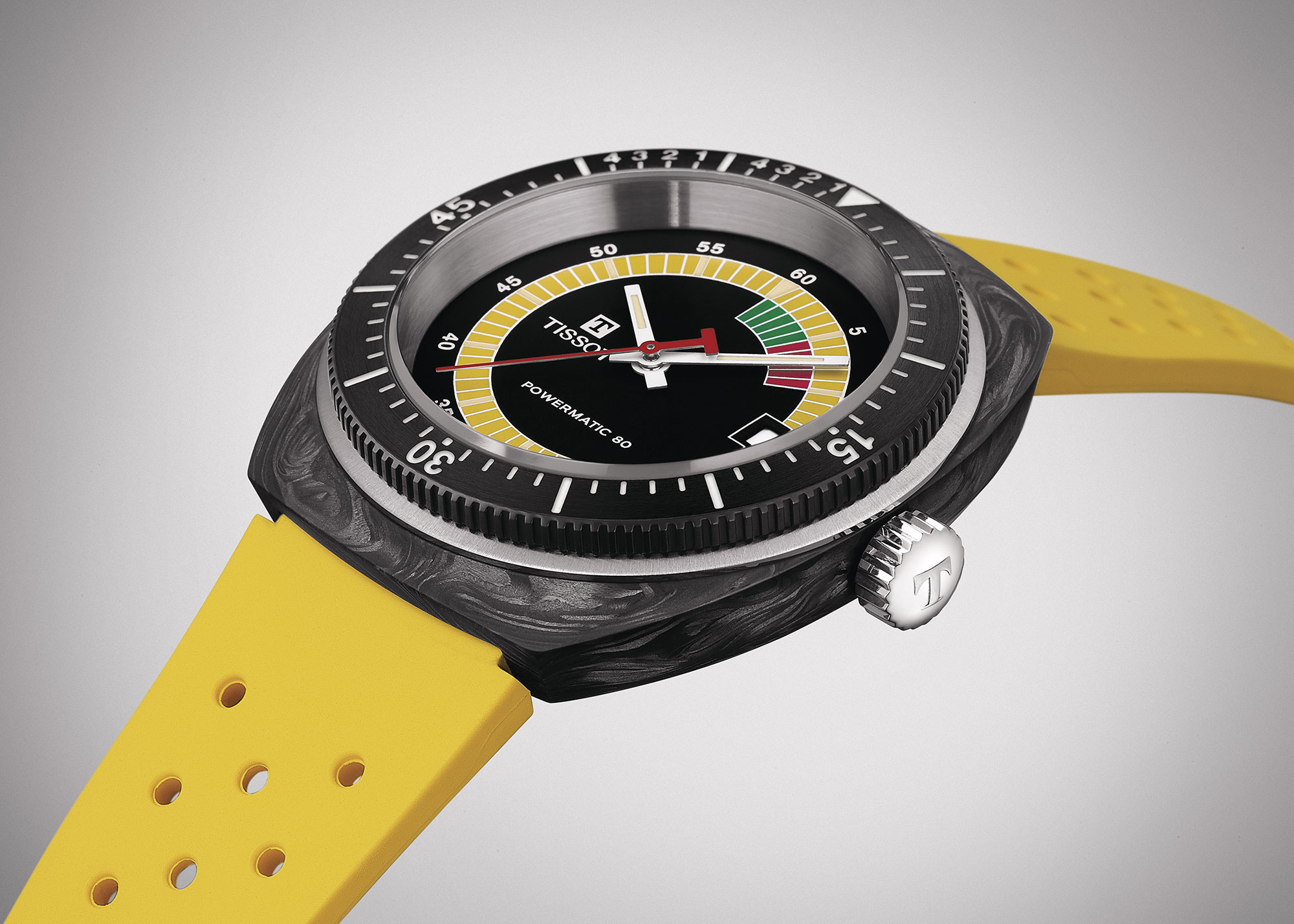
Luminous all around: The dial of the Sideral
Like the original, the dial of the Tissot Sideral is framed by a 39 mm diameter black PVD bezel. It is unidirectional and features a diver and regatta scale. The black dial showcases a 60-minute scale with Arabic numerals and indices that match the colour of the model: yellow for the yellow edition, grey for the red and blue for the blue version. Directly below and as in the 1970s, all models have a regatta countdown display which is divided into green and red between 12 and 2 o’clock. This design again strongly references the Sideral S. However, the 60-min-scale on the new Sideral is coloured throughout according to the cast of the model, rather than just having individual colour accents on specific minutes like with the vintage model.
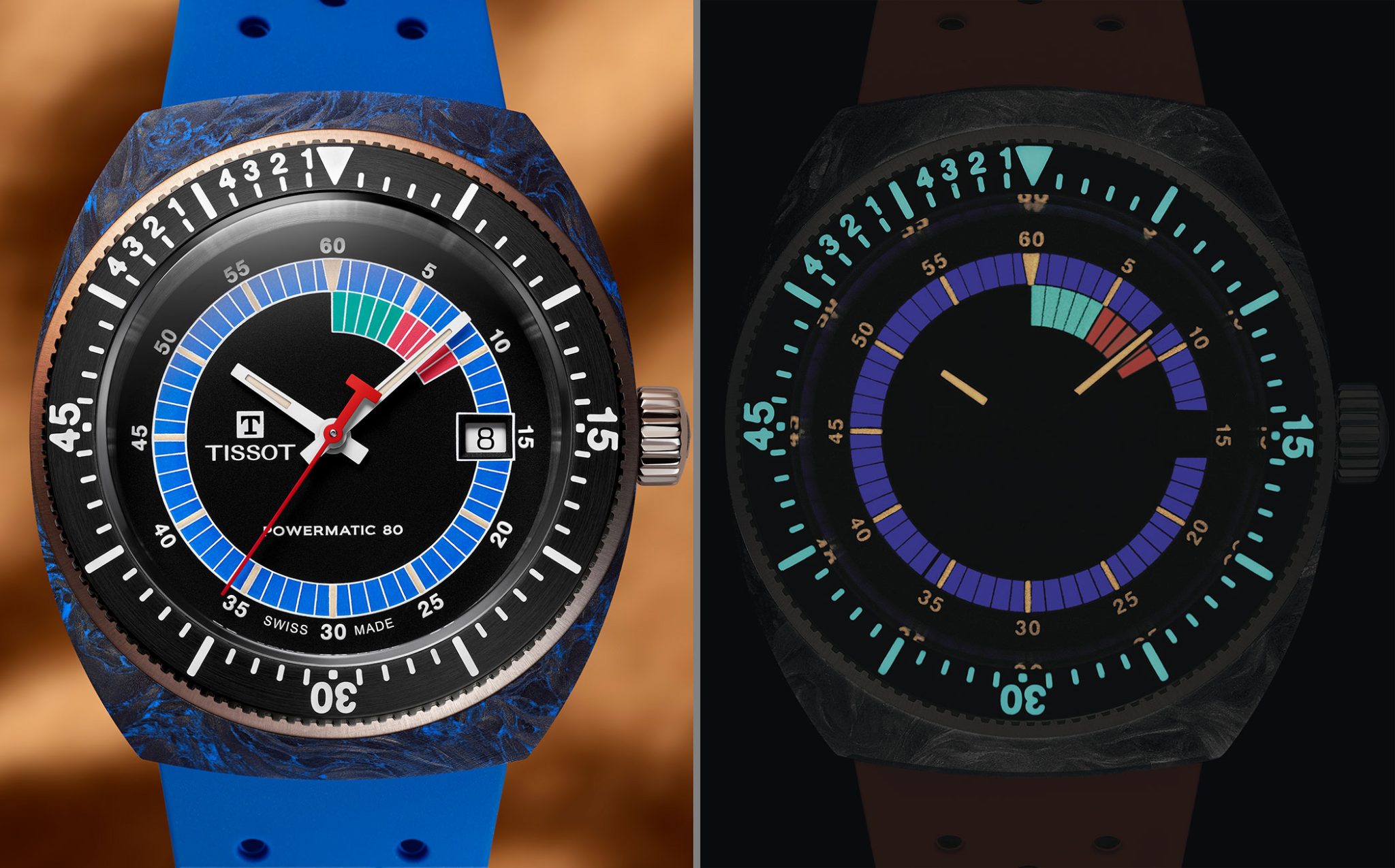
While the hour and minute hands are baton-shaped, the red second hand is T-shaped. Both the bezel, the hands, the hour and minute markers, and the Regatta countdown are coated with a different Super-LumiNova colour. Thus, they are easily recognisable – even in poor lighting conditions.
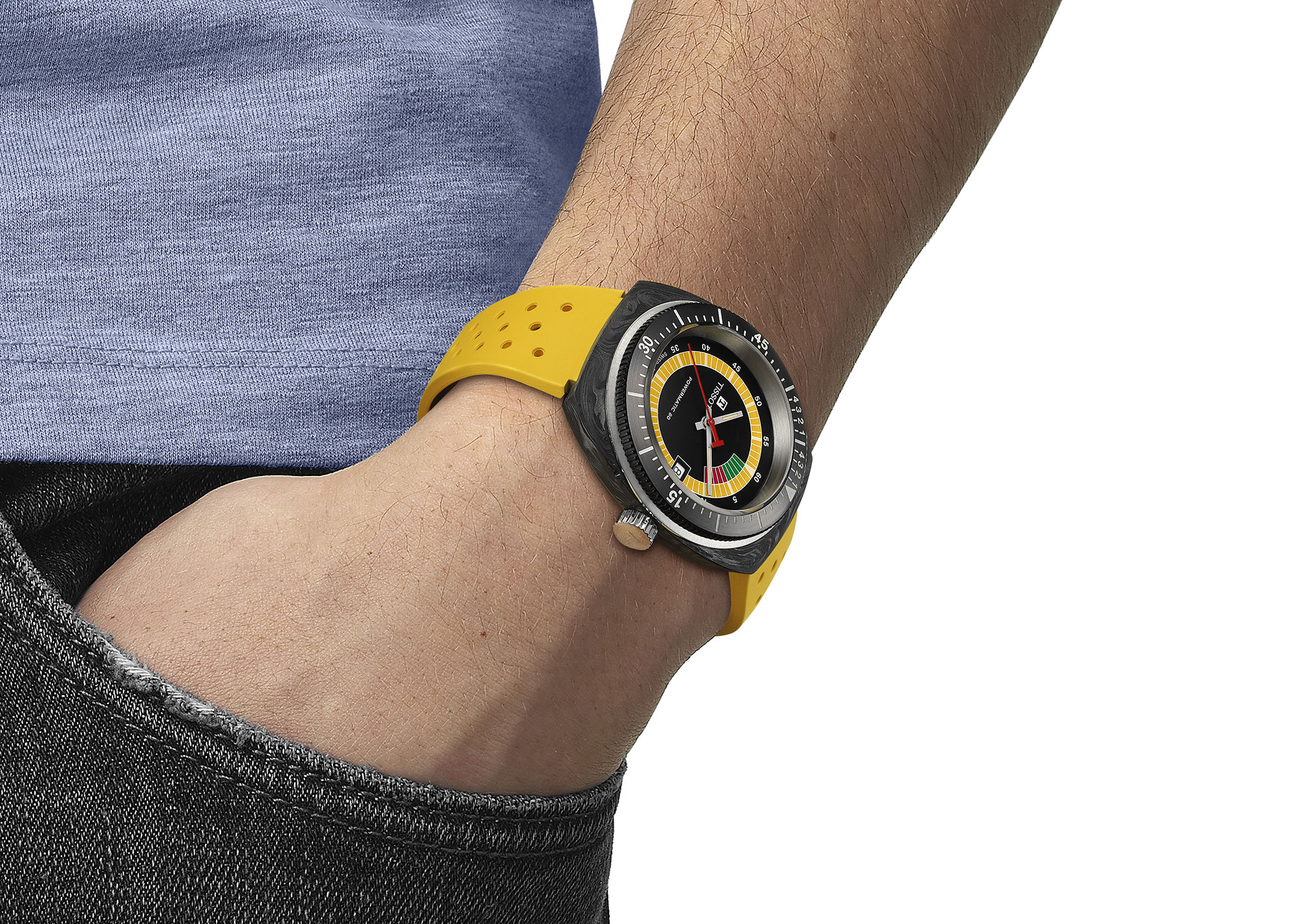
Powermatic 80: The movement of the Sideral
The Powermatic 80 automatic movement powers the Sideral. The precision of the movement is enhanced by the Nivachron balance spring, which is highly resistant to corrosion and not affected by magnetic fields. The power reserve is 80 hours. A new feature of this movement is the skeletonised Tissot rotor. It bears the engravings of the brand name and the year of foundation and can be admired by the wearer through the sapphire crystal caseback. In addition, 23 jewels adorn the movement.

Strap, price, and availability
A trademark of the 1970 Sideral collection was the perforated rubber strap with its innovative closing system. Thereby, the strap is adjusted and closed via the perforations. This year’s versions of the Sideral come with a colour-matching strap in yellow, red, or blue. Moreover, it is possible to swap between straps without tools and to purchase straps in other colours (green, orange, black). All editions are available for 1,075 euros.
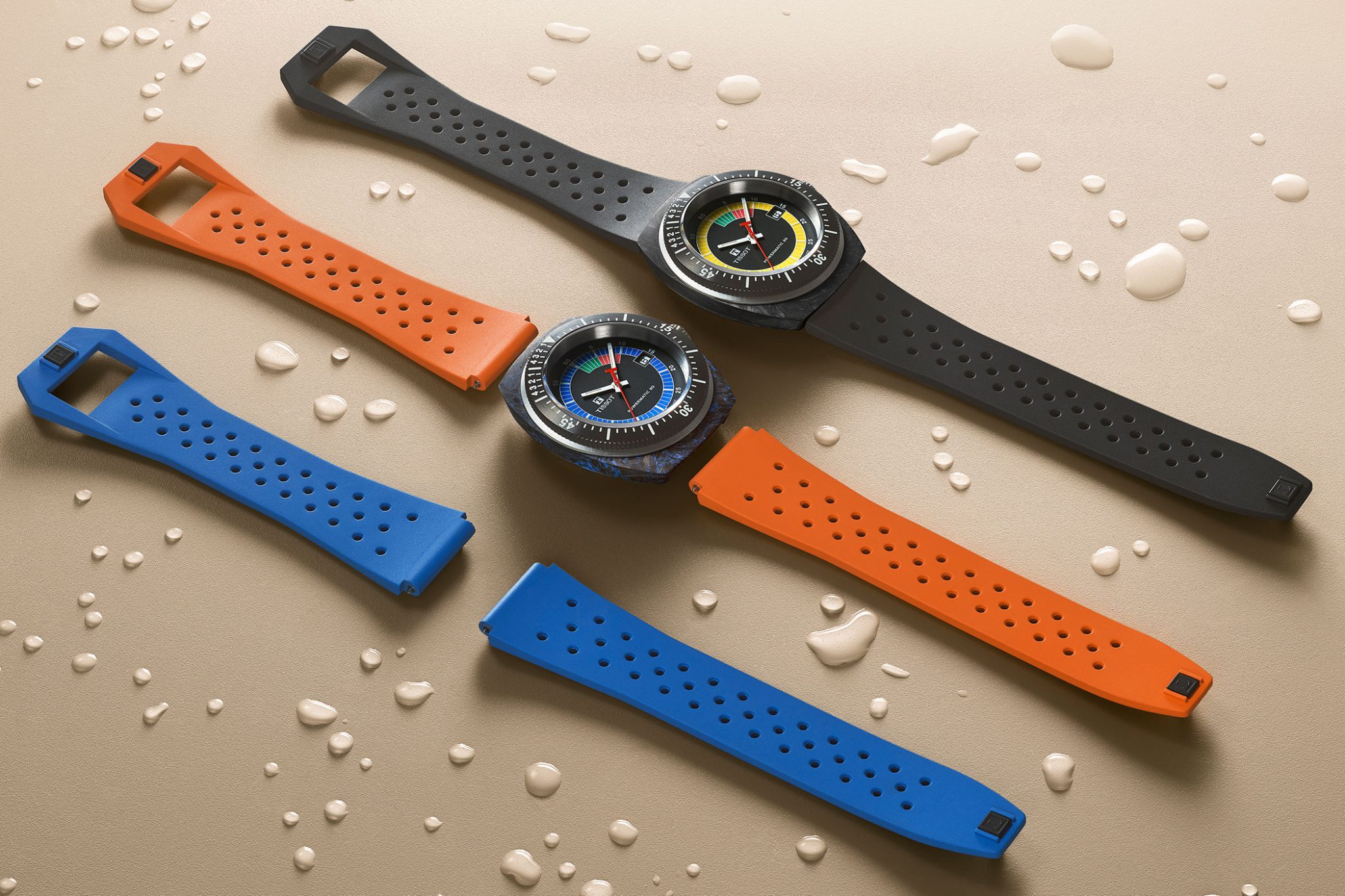
FEATURES
T145_407_97_057_01 (Blue)
T145_407_97_057_02 (Red)
Height: 14.4 mm
